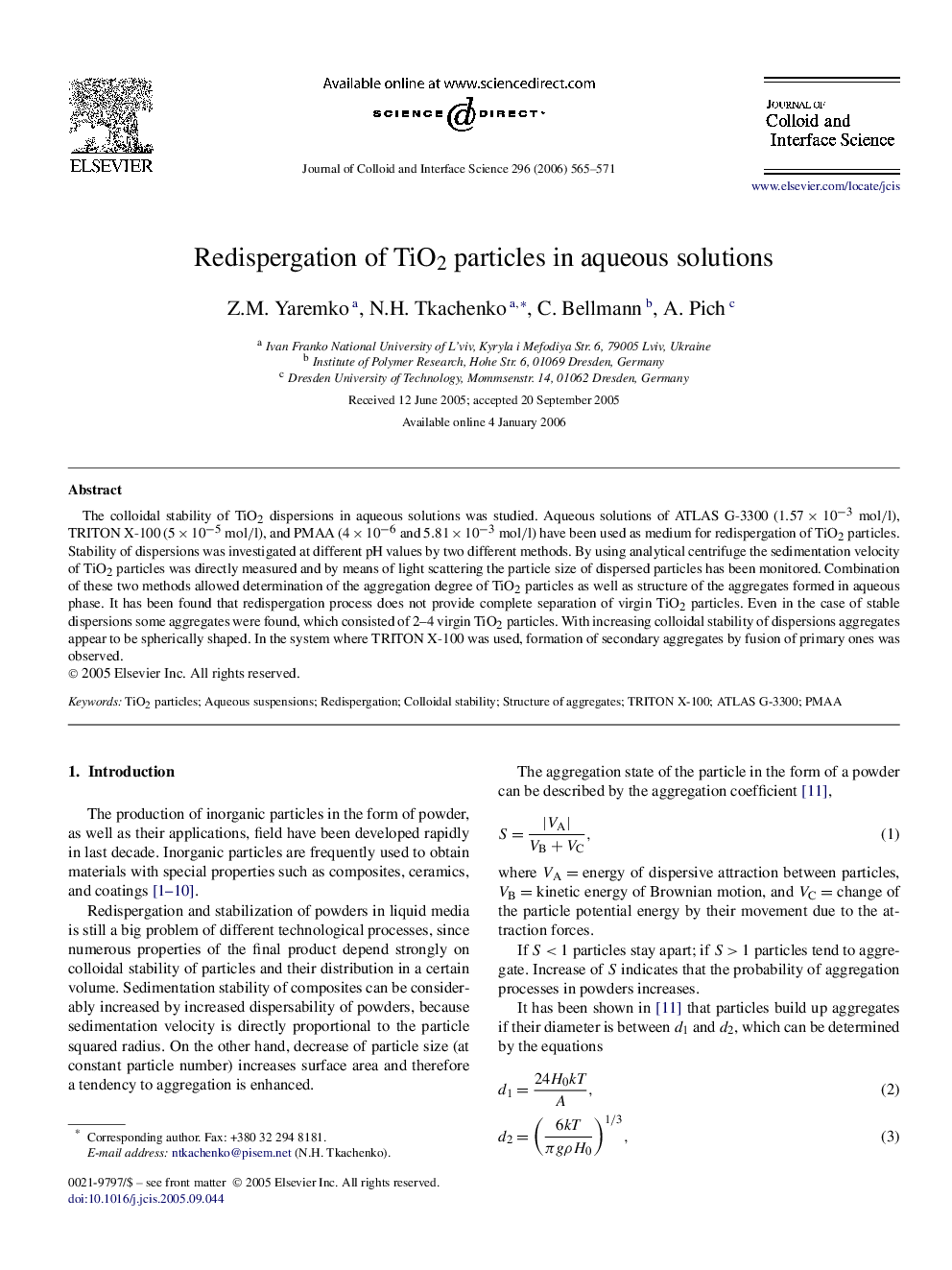| Article ID | Journal | Published Year | Pages | File Type |
|---|---|---|---|---|
| 613749 | Journal of Colloid and Interface Science | 2006 | 7 Pages |
The colloidal stability of TiO2 dispersions in aqueous solutions was studied. Aqueous solutions of ATLAS G-3300 (1.57×10−3 mol/l1.57×10−3 mol/l), TRITON X-100 (5×10−5 mol/l5×10−5 mol/l), and PMAA (4×10−64×10−6 and 5.81×10−3 mol/l5.81×10−3 mol/l) have been used as medium for redispergation of TiO2 particles. Stability of dispersions was investigated at different pH values by two different methods. By using analytical centrifuge the sedimentation velocity of TiO2 particles was directly measured and by means of light scattering the particle size of dispersed particles has been monitored. Combination of these two methods allowed determination of the aggregation degree of TiO2 particles as well as structure of the aggregates formed in aqueous phase. It has been found that redispergation process does not provide complete separation of virgin TiO2 particles. Even in the case of stable dispersions some aggregates were found, which consisted of 2–4 virgin TiO2 particles. With increasing colloidal stability of dispersions aggregates appear to be spherically shaped. In the system where TRITON X-100 was used, formation of secondary aggregates by fusion of primary ones was observed.
Graphical abstractFigure optionsDownload full-size imageDownload as PowerPoint slide
